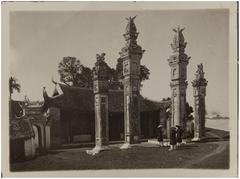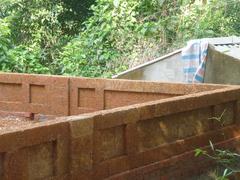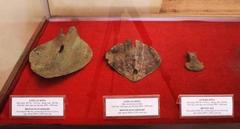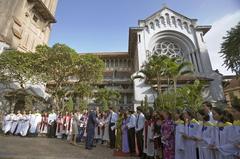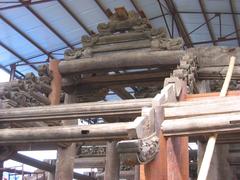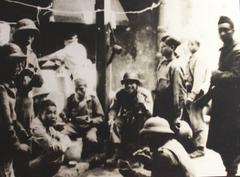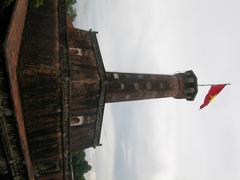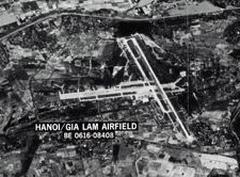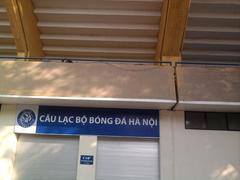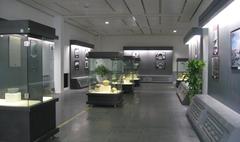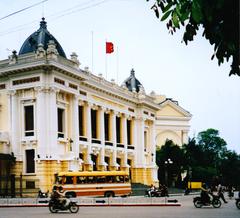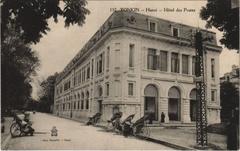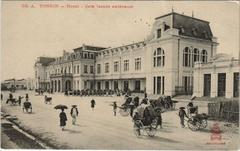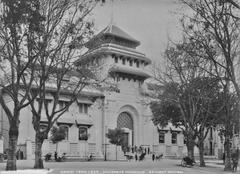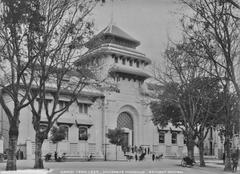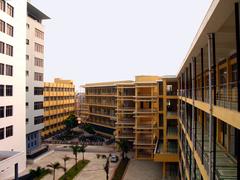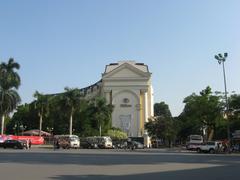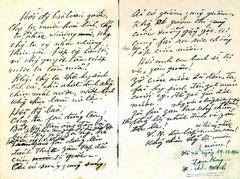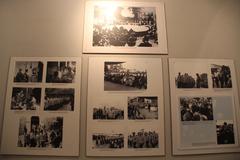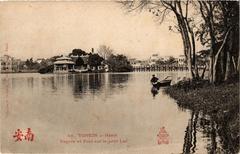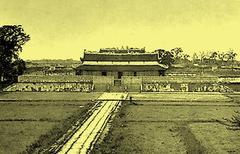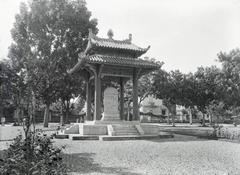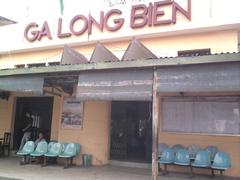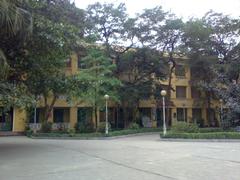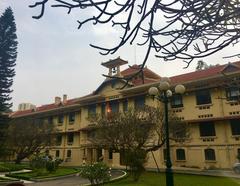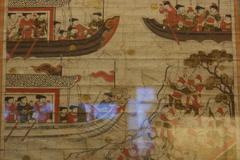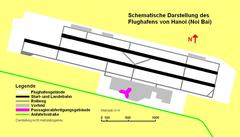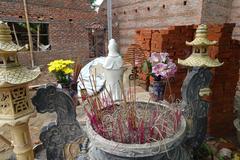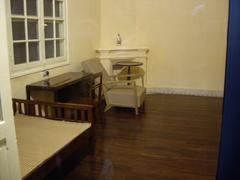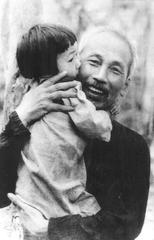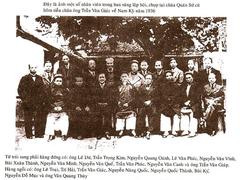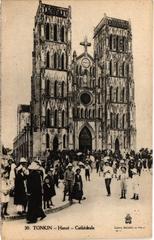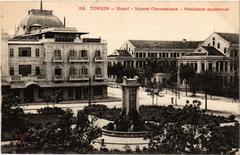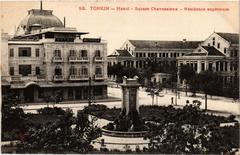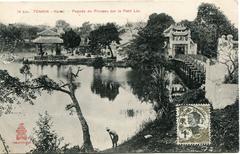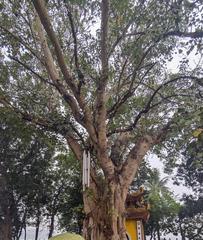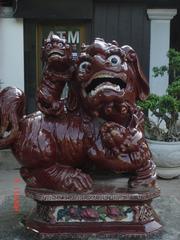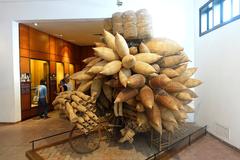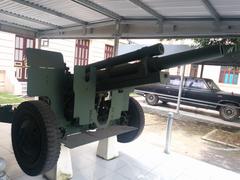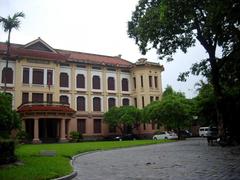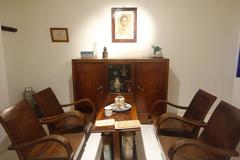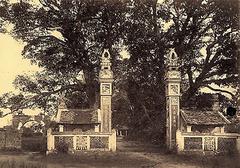Đại La, Hanoi, Vietnam: Visiting Hours, Tickets, and Historical Sites Guide
Date: 15/06/2025
Introduction
Đại La, the ancient heart of present-day Hanoi, stands as a testament to Vietnam’s millennia-old history and vibrant cultural heritage. Established during the Tang dynasty (7th–9th centuries CE), Đại La was the administrative, military, and cultural hub from which the city of Thăng Long—modern Hanoi—emerged. Its strategic position in the Red River Delta fostered centuries of political, religious, and artistic developments that shaped Vietnamese identity. Today, the remnants of Đại La’s citadel, temples, and bustling streets invite visitors to journey through the layers of Hanoi’s imperial and living heritage.
This guide explores Đại La’s historical significance, architectural marvels, enduring cultural legacy, and essential travel information—covering visiting hours, ticketing, accessibility, nearby attractions, and expert travel tips. Whether you’re a history enthusiast, a cultural traveler, or a first-time visitor to Hanoi, this article offers everything you need for a rewarding experience at one of Vietnam’s most important historical sites.
For further details and resources, see Lily’s Travel Agency, Vietnam Travel, Imperial Citadel of Thăng Long - Wikipedia, Local Vietnam, and This Expansive Adventure.
Contents
- Early Foundations of Đại La
- Visiting Đại La: Practical Information
- Đại La’s Cultural and Political Legacy
- Architectural and Urban Heritage
- Key Sites and Attractions
- Practical Tips for Visitors
- Frequently Asked Questions (FAQ)
- Conclusion & Call to Action
- References
1. Early Foundations of Đại La
Geographical and Strategic Importance
Đại La’s site in the Red River Delta made it a linchpin for trade, defense, and governance. Elevated land protected it from floods, while proximity to major waterways facilitated commerce and communication (Lily’s Travel Agency).
Chinese Dominion and the Birth of Đại La
From the 7th to 9th centuries, under Tang dynasty rule, Đại La was established as an administrative stronghold. The Chinese built Đại La Thành, a fortified city with moats, walled precincts, and organized streets, introducing advanced urban planning, administrative practices, and cultural influences (Vietnam Immigration).
Urban Development and Archaeological Legacy
Archaeological discoveries reveal robust fortifications made of rammed earth and brick, sophisticated drainage systems, and artifacts such as ceramics and coins. These finds testify to Đại La’s cosmopolitan character and its role as a center for trade, governance, and culture (North Vietnam Travel).
Political Significance and Transition
By the late 9th century, Đại La was a crucial center in northern Vietnam. The weakening of the Tang dynasty paved the way for local autonomy. In 1010, King Lý Thái Tổ established his capital here, inspired by a legendary vision of a dragon rising from the river, and renamed it Thăng Long (“Rising Dragon”) (Lily’s Travel Agency).
2. Visiting Đại La: Practical Information
Visiting Hours and Tickets
- Imperial Citadel of Thăng Long: Open daily, 8:00 AM – 5:00 PM.
- Entrance Fee: Typically 30,000 VND (~$1.30 USD) for adults; discounts for students and seniors; free for young children (Local Vietnam).
- Ticketing: Purchase onsite or online through authorized platforms. Guided tour packages are available.
Getting There
Located centrally in Hanoi’s Ba Dinh District, Đại La (Thăng Long Citadel) is easily accessible by taxi, bus, or on foot from the Old Quarter. Airport transfers via taxi or ride-hailing apps take approximately 45 minutes (This Expansive Adventure).
Accessibility
The site is partially wheelchair accessible. Main areas feature ramps and flat paths, but some ancient sections may have uneven terrain. Contact visitor services in advance for assistance.
Guided Tours
Local operators offer guided tours in English and Vietnamese, providing rich historical context and access to hidden highlights.
Nearby Attractions
- Temple of Literature
- Hoàn Kiếm Lake
- Old Quarter
- Dong Xuan Market
- Tran Quoc Pagoda
High-quality visuals and virtual tours are available online and at the visitor center (Lily’s Travel Agency Virtual Tour).
3. Đại La’s Cultural and Political Legacy
Đại La’s transformation into Thăng Long marked the rise of an independent Vietnamese identity. As the capital under successive dynasties, it became a hub for governance, culture, and learning (Imperial Citadel of Thăng Long - Wikipedia). The legacy of its administrative systems, Confucian educational traditions, and religious syncretism endures in modern Hanoi (Vietnam Travel).
Rituals and festivals rooted in the Đại La era continue to foster community and historical continuity. The Temple of Literature and numerous pagodas, many founded during or soon after the Đại La period, highlight the city’s role as Vietnam’s intellectual heart (Hanoi Explore Travel).
4. Architectural and Urban Heritage
Excavations at 18 Hoàng Diệu Street have uncovered foundations, decorative tiles, wells, and remnants of the original city walls (Imperial Citadel of Thăng Long - Wikipedia). The citadel’s concentric design, sophisticated water management, and integration of administrative, religious, and commercial spaces reflect a blend of Chinese and indigenous influences (Vietnam Travel).
5. Key Sites and Attractions
Đại La Citadel Archaeological Site
- Visiting Hours: 8:00 AM – 5:00 PM daily
- Features: Ancient walls, drainage systems, stratified excavation pits, on-site museum (Wikipedia)
- Guided Tours: Available in English and Vietnamese
Co Loa Citadel
- Location: Dong Anh District
- Hours: 7:30 AM – 5:00 PM daily
- Highlights: Earthen ramparts, An Dương Vương Temple, museum (IDC Travel)
Imperial Citadel of Thăng Long
- Flag Tower of Hanoi: Panoramic city views
- Doan Mon Gate: Main southern entrance
- Kinh Thien Palace Foundations: Remnants of the royal hall
- Exhibition Halls: Rotating displays of artifacts (Gonetovietnam)
Old East Gate (Ô Quan Chưởng)
- Type: Ancient city gate, freely accessible and popular for photography
Temples and Pagodas
- Bach Ma Temple: One of Hanoi’s oldest, dedicated to the White Horse deity (Cultural Plus)
- Tran Quoc Pagoda: Vietnam’s oldest Buddhist temple, on West Lake
Markets and Traditional Streets
- Dong Xuan Market: Daily, early morning to evening
- Old Quarter: Historic street grid, traditional shop houses, walking tours (Vietnam Original Travel)
6. Practical Tips for Visitors
- Best Time to Visit: Spring (March–April) and autumn (September–November) have the most comfortable weather (Cultural Plus).
- Getting Around: Walking, cycling, taxis, and public buses are effective. Cyclo tours are a unique way to see the area.
- Cultural Etiquette: Dress modestly, remove shoes at temples, greet with a bow or nod.
- Safety: Be cautious of pickpockets; use small cash denominations; drink bottled water (idctravel.com).
- Connectivity: Free Wi-Fi is common; local SIM cards are affordable (getvisavietnam.com).
- Sustainability: Use reusable bottles, support local businesses, and respect preservation rules (onetripwithlocal.com).
7. Frequently Asked Questions (FAQ)
Q: What are the visiting hours for major Đại La sites?
A: Most sites are open from 8:00 AM to 5:00 PM daily; check for changes on holidays.
Q: How much are tickets?
A: Generally 30,000 VND (~$1.30 USD) for adults; discounts for students and seniors.
Q: Are tours available?
A: Guided and audio tours in English and Vietnamese are widely available.
Q: Is the site accessible for people with disabilities?
A: Main areas have accessibility features; contact visitor services for further support.
Q: What are nearby attractions?
A: The Temple of Literature, Hoàn Kiếm Lake, and the Old Quarter are all within easy reach.
8. Conclusion & Call to Action
Exploring Đại La is a journey into Hanoi’s ancient roots and Vietnam’s imperial heritage. Its archaeological treasures, cultural landmarks, and living traditions create a rich tapestry for all visitors. Plan your visit by consulting official sources for the latest on tickets and hours, consider guided tours for deeper engagement, and utilize digital resources for immersive learning.
Download the Audiala app for real-time updates, guided audio tours, and exclusive insights. Explore more on our website and follow us on social media for current events and travel tips. Experience Đại La—where Vietnam’s history comes to life!
9. References
- Đại La History and Visitor Guide: Visiting Hours, Tickets, and Hanoi’s Historical Sites, 2025, Lily’s Travel Agency (https://lilystravelagency.com/imperial-citadel-of-thang-long/)
- Visiting Đại La: History, Tickets, Hours & Hanoi Historical Sites Guide, 2025, Wikipedia and Vietnam Travel (https://en.wikipedia.org/wiki/Imperial_Citadel_of_Th%C4%83ng_Long), (https://vietnam.travel/things-to-do/hanoi-six-heritage-sites)
- Key Sites and Attractions, 2025, Vietnam Travel and Cultural Plus (https://www.vietnam.travel/things-to-do/11-must-see-attractions-ha-noi), (https://culturalplus.com/hanoi-cultural-experiences-guide/)
- Visiting Đại La, Hanoi: Hours, Tickets, and Essential Travel Tips, 2025, This Expansive Adventure and Local Vietnam (https://www.thisexpansiveadventure.com/blog/vietnam/things-to-do-in-hanoi/), (https://localvietnam.com/travel-guide/things-to-do/hanoi/)


